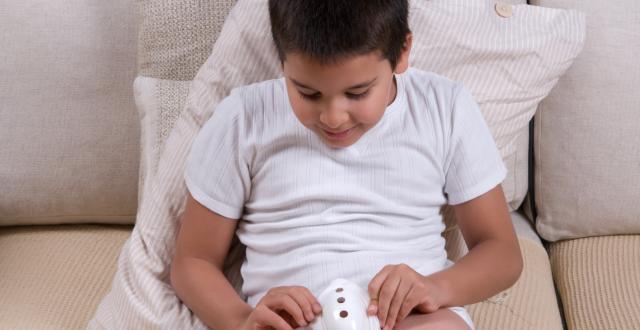Circumcision: surgical expertise dedicated to children at the Queen Fabiola Children’s University Hospital (Brussels)
At the Queen Fabiola Children’s University Hospital (HUDERF), circumcision is among the most frequently performed procedures in paediatric urology.
Carried out in a highly secure environment, the operation draws on the full expertise of the hospital’s surgical and anaesthetic teams, renowned for their technical excellence and attentive support for families.

Circumcision in Children: Recognised Expertise at the Queen Fabiola Children’s Hospital
Circumcision involves removing the foreskin, the thin layer of skin covering the head of the penis.
At HUDERF, the procedure is performed after the age of one, unless there is a medical reason to intervene earlier. This choice is based on anatomical considerations: at that age, the skin is more flexible, healing is faster, and post-operative comfort is easier to manage.
The operation is carried out under general anaesthesia, often combined with local anaesthesia of the penis to prolong pain relief. In most cases, it is performed as day surgery: the child is admitted and discharged the same day.
Before the operation, a surgical and anaesthetic consultation helps assess the clinical situation, explain the procedure, and prepare the child for this step with care and empathy.
Parents are always guided to understand the post-operative care once back home.
Surgery Department
Why Circumcision May Be Recommended
In some children, the foreskin becomes a source of discomfort, irritation, or infection.
The procedure restores normal anatomy and helps prevent local complications.
The main situations concerned are:
- Phimosis: when the foreskin opening is too tight, preventing full retraction and causing pain or difficulty during urination.
- Recurrent balanitis or balanoposthitis: repeated inflammation of the glans or foreskin, sometimes resistant to local treatments.
- Difficult hygiene: a tight foreskin may trap secretions, leading to chronic irritation.
- Functional discomfort: skin tension may cause mechanical discomfort or repeated microtrauma.
Although benign, these conditions can affect the child’s quality of life and justify a simple and lasting surgical solution.
Circumcision Brochure
After the Operation: Care and Recovery
The surgical procedure is brief — about thirty minutes — and recovery is quick.
The stitches used are absorbable and fall off on their own within two to three weeks.
Postoperative pain is usually mild and well controlled with appropriate pain medication for children.
Parents receive a few key instructions:
- apply an ointment to the scar for several days,
- prefer showers over baths in the first days,
- dress the child in loose clothing,
- avoid swimming, horse riding, or cycling for about one month.
A follow-up appointment is scheduled approximately one week after surgery to ensure proper healing.
Thanks to a gentle approach, children quickly resume their usual activities, without pain or lasting discomfort.
Recognised Expertise at HUDERF
At every stage, the surgical team at the Queen Fabiola Children’s Hospital combines technical excellence, anaesthetic safety, and compassionate care.
This quality of management places HUDERF among the leading Belgian references in paediatric surgery: a child-focused hospital environment, specialised anaesthetists, and nursing staff trained in day surgery.
The goal is simple: to offer each child a safe, painless, and reassuring procedure, in an atmosphere of trust with their parents.
Circumcision: Advice for Parents
Three Recent Studies on Circumcision
- Zhang et al. (2024) – Optimizing Treatment Strategies for Pediatric Phimosis and Balanitis
- Dhaliwal et al. (2025) – Complications Associated With Circumcision in a Pediatric Population
- Boakye & Obeng (2025) – Clinical Outcomes of Pediatric Circumcisions